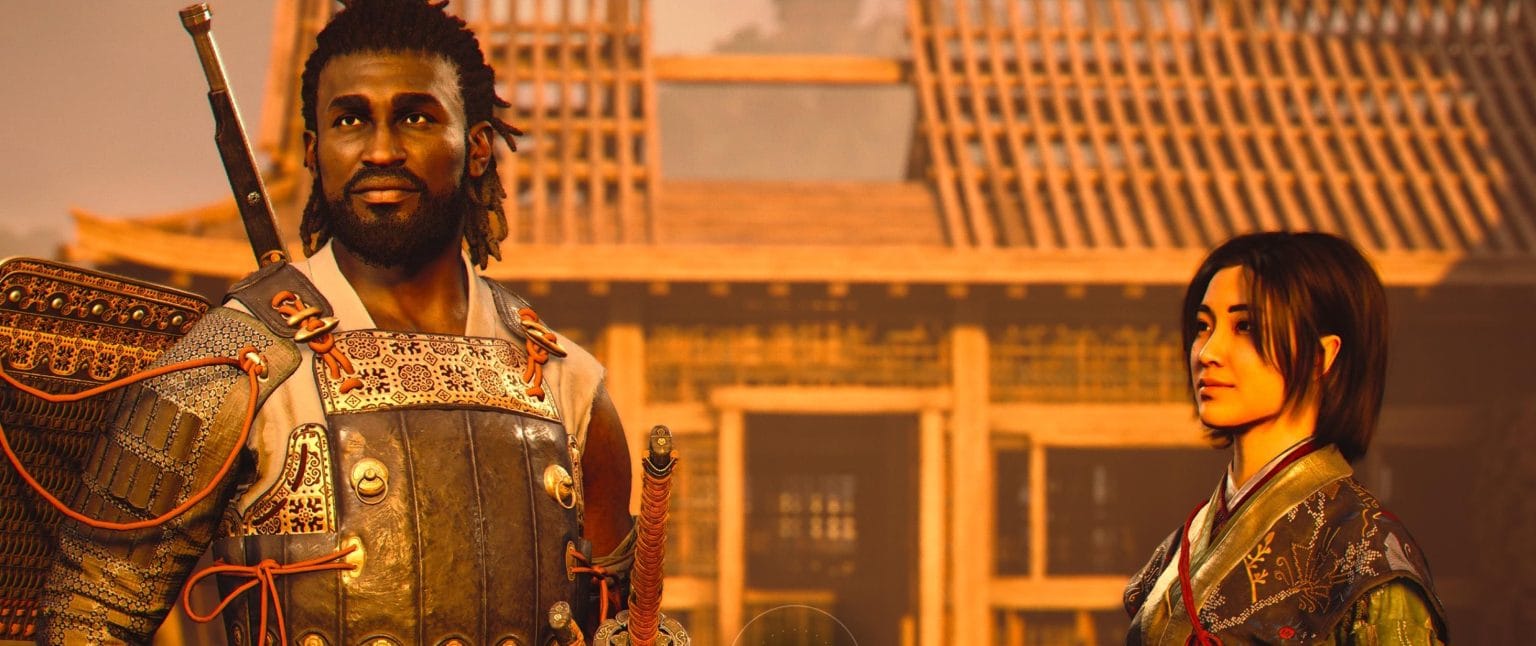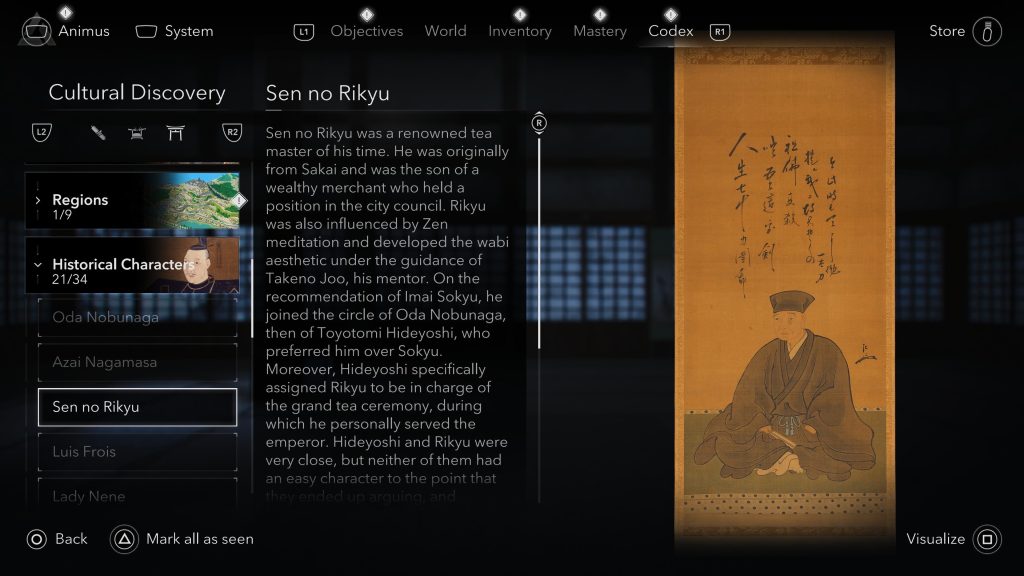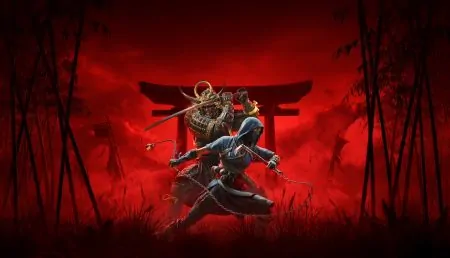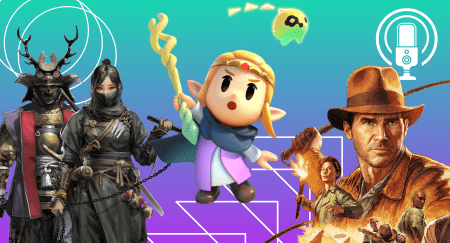During summer, I love to find a big game to binge so I can routinely find a comfortable place to hide from the heat and mosquitoes. This season, that game is Assassin’s Creed Shadows, which Ubisoft released in March of this year. While the game got decent (but not exactly rave) reviews, I was still excited to give it a try once it went on sale.
Today, I shared a list of baffling design decisions in this game that annoyed me. However, I’ve also found a lot to admire. So, to play devil’s advocate to myself, I’ll counter-balance with some notes of appreciation here.

1. Powerful, Beautiful Settings With Seasons
Fans of the series have been hoping for the globe- and time-traveling franchise to make its way to Japan for ages, and Ubisoft finally delivered. The game showcases 1500s Japan best through a rotation of the seasons at different stages. Sakura petals fall delicately across a village road. A violent freezing rainstorm hides me from the castle guards. Crisp breezes and autumnal leaves welcome visitors to my hideout.
The change in seasons, as far as I can tell, is triggered by a combination of number of quests finished, fast travels taken, and in-game days passed. These season changes make the world feel lived-in, and keep the setting visually varied.
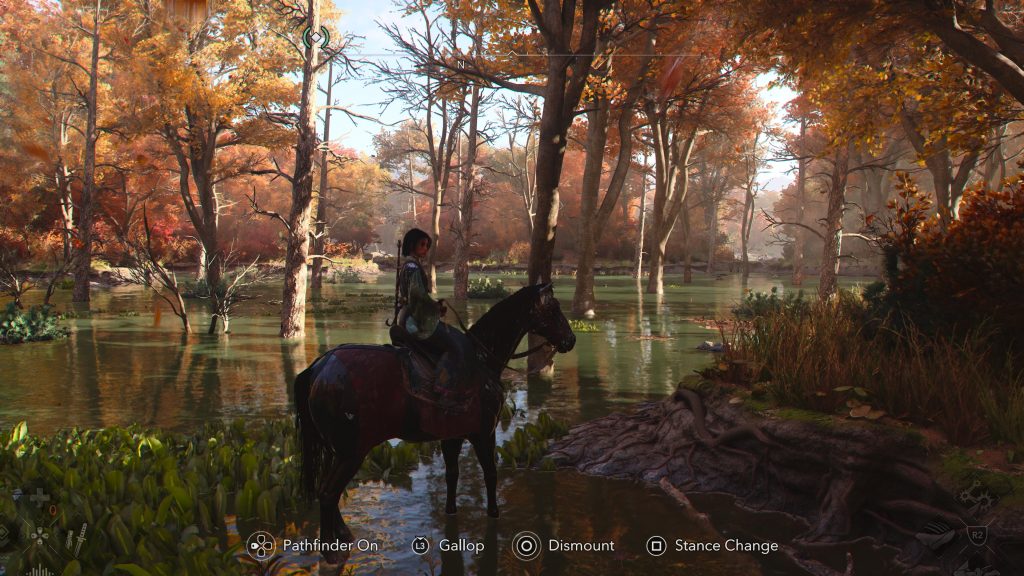
It isn’t just aesthetic, either — the seasonal changes allow for players’ agents to smuggle resources and for enemy bases to refresh. Meanwhile, stormy nights are perfect for infiltrating a secret base, as the rain and wind cloak my movements.
While I have complained about the game’s fairly empty open world, I accepted it for what it is because the landscapes are so great. Fields of crops, snow-capped mountains, winding rivers… It’s easy to admire the beauty.
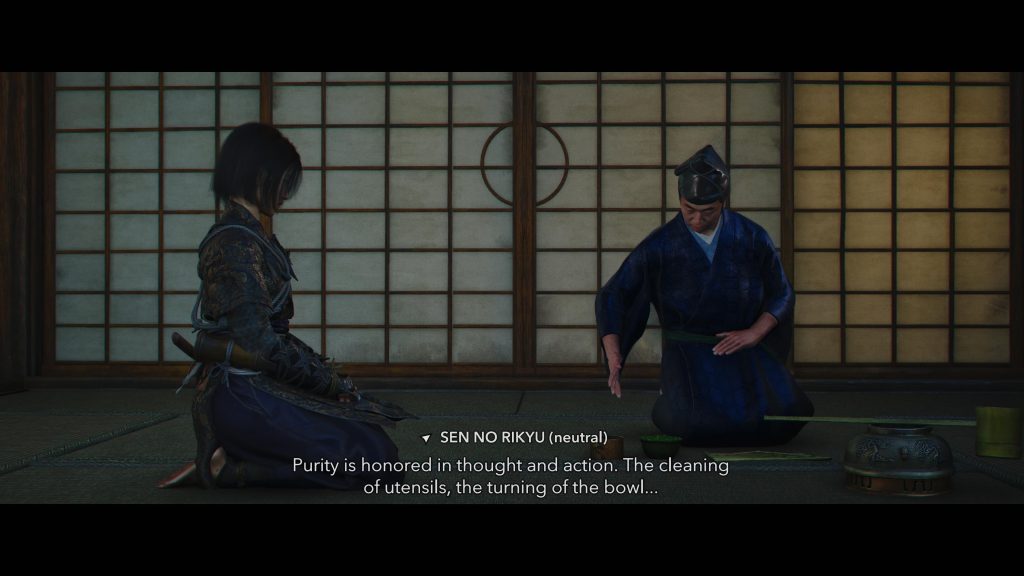
2. Commitment to the Codex
Codexes have been a staple of big video games for years. To be honest, I rarely read them. These detailed lore pages, whether they be about fact or the fantastical, often overwhelm me. When I started Assassin’s Creed Shadows, I felt the same way. Small, unintrusive pop-ups frequently appeared, letting me know that I’d unlocked a codex about a region or temple. I didn’t read them — at least, not until I went to tea.
As part of the main campaign, Naoe meets a ceremonial tea master named Sen no Rikyu. I had never known much about these traditions around tea, and I loved learning about them through the lens of this video game. I was utterly charmed by Sen no Rikyu’s precision and love of his craft. What great writing, I thought. When I left his house, I was surprised when a historical codex entry appeared. I assumed he had been a made-up character. I clicked on it.
What I read in his codex delighted and shocked me. I literally gasped out loud at the intrigue and his fate. I began reading other codexes that I had already unlocked but previously ignored. I’ve learned about prayers at temples, Lady Nena, the importance of cherry blossoms, Noh theater, and wars. These codex entries can be discovered or unlocked through the main story (which is compelling!), side quests, and exploring.
There’s so much research behind this game! Many of the modern series entries have been praised for their historical accuracy, and Shadows is no different. There are dozens of codex entries for real individuals, impressive buildings, and cultural traditions. This must not be easy work, to gather information and distill it into succinct articles that many players may not even read, but I’m grateful for it. My experience playing Shadows is better for it.
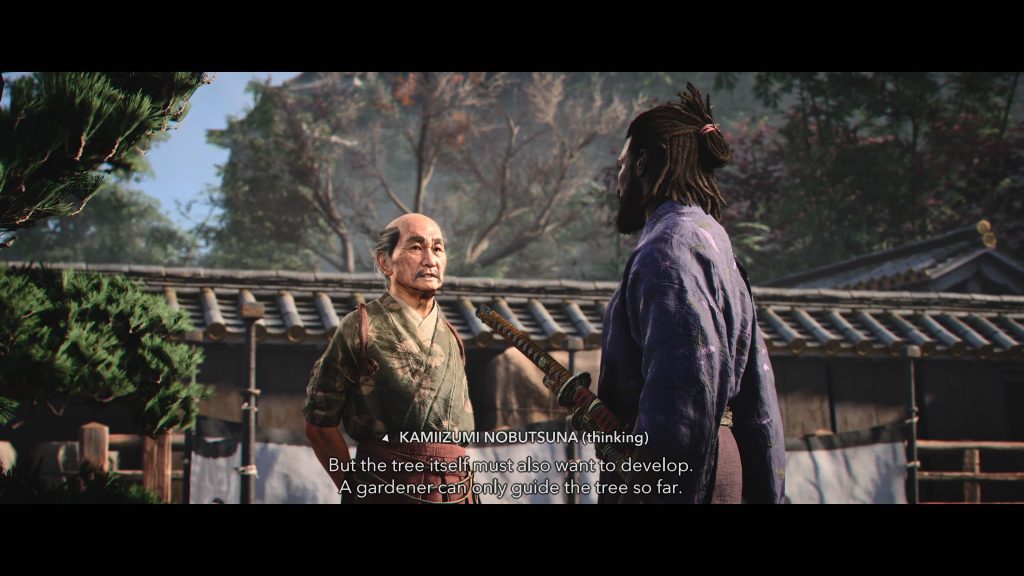
3. Yasuke’s Story — and Gameplay — Is Awesome
Assassin’s Creed Shadows is most successful in its portrayal of Yasuke, an African-born samurai. The game deftly builds on the warrior’s known history and fictional filling in of the blanks. The result is a powerful story of perseverance, bravery, and identity. He arrives in Japan as a slave to Portuguese missionaries, but is freed and trained by Oda Nobunaga, the most powerful man in the land.
While Naoe’s backstory — the prodigal daughter of a rumored founder of ninja combat — is good, it’s Yasuke’s origins that steal the show. His journey from outsider to success story is well-paced with powerful cutscenes and meaningful combat challenges. Yasuke’s weapon options are much more diverse than Naoe’s, and wrecking battles with a long bladed naginata or a giant kanobo or even a teppo, a Japanese rifle, is incredibly satisfying.

The dual protagonists are significantly different to play (in a fun way!), but it’s also cool to see how NPCs react differently. When Yasuke walks down the street, other warriors and villagers bend their heads to him as a sign of respect.
There are no historical sources on the later years of Yasuke’s life. The game fills this void by imagining Yasuke finding purpose and kinship with Naoe on her journey to free Japan from evil forces. The two push each other to grow, laughing along the way. I love that Assassin’s Creed Shadows gives Yasuke an epilogue of community, friendship, and belonging.

4. Good Looks — Fabric Textures, Naoe’s Hair, Movement Animation
The gear in Assassin’s Creed Shadows is absolutely gorgeous. Whether it’s a carefully etched steel samurai chest plate for Yasuke or an embroidered kasode for Naoe, the armor is beautiful. I usually find the slough of gathering new stuff to be annoying and the management thereof to be boring. However, in Shadows, I’m always excited to see what I’ll find.
I frequently found myself amazed during cutscenes by the game’s details. Look at the way Naoe’s hair blows gently in the wind! Or how the setting sun catches those gold threads! The gentle sheen of the metal on the teppo strapped to Yasuke’s back! Combined with the sweeping vistas and seasons, it’s easy to admire the visuals of Assassin’s Creed Shadows.
As I explored these settings, I also enjoyed how my characters moved. Naoe is incredibly nimble as she scales castle walls, pulling herself up with an upper body strength I can only dream of. I loved watching her flip backwards off a temple or do the “Naruto run” in the moonlight. By comparison, Yasuke just can’t do what Naoe does — which is a nice boon for her since Yasuke’s combat is so overpowered.
Yasuke tries to lift himself and his heavy armor up a wall I just darted up as Naoe, and can’t. He’ll even do the famous Assassin’s Creed swan dive into a bale of hay in a miraculously ungraceful way, stumbling out and rubbing his back, muttering that he’s glad no one saw that. Aside from just being amusing, these differences made me pay more attention to which character I chose and when. Switching between the characters made me all the more appreciative of Naoe’s mobility and Yasuke’s strength. It’s a thoughtful attention to detail, one that allows these characters to truly inhabit different playable experiences.
5. Immersive Language Mode
I started the game with English speaking on, but I quickly found that a few of the voice actors rubbed me the wrong way. Some of their work felt forced, overly dramatic, and heavy-handed. I remembered during the initial setup that the game had promoted an Immersive Language Mode that would blend, where appropriate, Japanese and Portuguese voice acting with English subtitles. I wasn’t sure if it would be a good fit, wondering if it would be annoying to have to read subtitles while also having a katana fight.
However, not only was it not a problem, but it actively improved my experience. I found the Japanese voice actors to be emotive and enthusiastic; they seemed actually excited to read their lines. Even though I didn’t understand the words, I always understood the meaning behind them. Hearing fishermen and farmers call out to each other in their native language made me feel all the more in the zone, further showcasing how the immersive language mode succeeds on multiple levels.
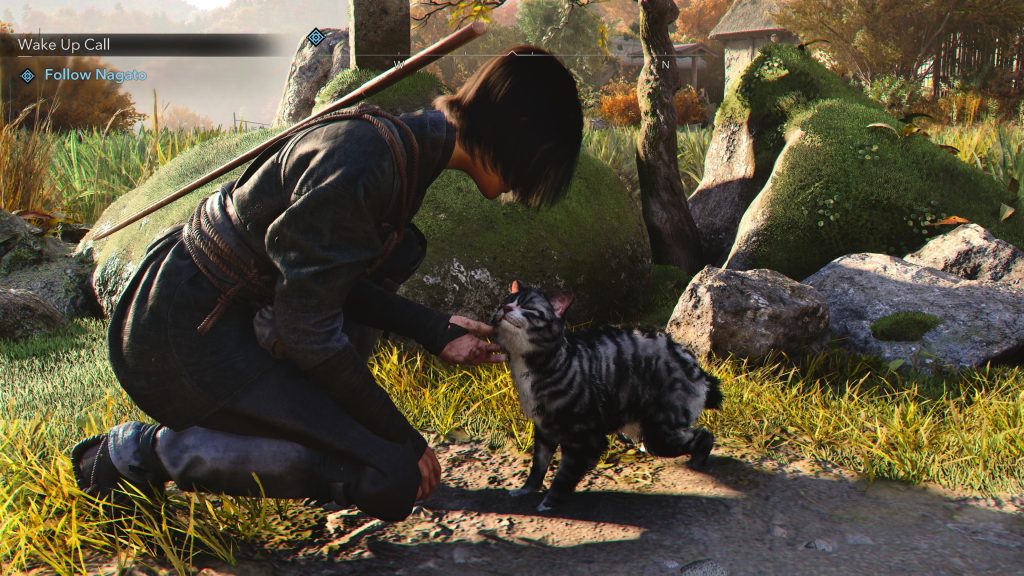
6. Petting Dogs and Cats While Admiring Birds
You can pet any dog or cat you see, and you eventually get the option to house one at your hideout which is kind of fun to decorate. Now, I have tons of red-and-white Shiba Inu puppies running around my forge, and I’m so happy.
This isn’t the only notable feature related to animals in Shadows, either. A young, sweet boy named Junjiro (for whom I would do anything to protect) teaches Naoe to relax by doing ink sketches of wild animals. Throughout the game, Naoe — as well as Yasuke — can pause to witness and draw interesting moments of wildlife. The animals vary significantly by season, time of day, and region, so it’s always a surprise what you might encounter.
While I’ve seen foxes hunt in the snow and boars give themselves sand baths, there’s perhaps no animal that Assassin’s Creed Shadows features better than our fine-feathered friends. As a very amateur birdwatcher, I was delighted to see the care and detail in animating cranes hunting fish. While I wish the game’s horses were treated better, I do appreciate that Naoe’s ink portraits can be hung back at base, and that now I have little pet foxes at home.

7. Punk Music
There are a few — literally only two that I’ve experienced — cutscenes that anachronistically play modern punk rock music during a battle. There is one such soundtracked fight each for Naoe and Yasuke, both appearing during their respective optional “origin story” quests. Naoe’s in particular was so awesome and well-executed that, out loud, I said, “Sick.”
This directorial decision is a small moment, but one that highlights a style taste — and a creative risk, one that I wish there were more of in Shadows.

Assassin’s Creed Shadows Isn’t Brilliant, But It’s Good Enough
For my purpose of pursuing a sense of escapism from an American summer 500 years later, Assassin’s Creed Shadows succeeds in distracting me.
That being said, I definitely have no interest in trying to 100% the newest Ubisoft open world. In my list of nine things that Assassin’s Creed Shadows gets wrong, I share fundamental design flaws that I find truly baffling that hold me back from going all in. However, for the time that I’m playing, I’ve got a lot to admire.
Assassin’s Creed Shadows, developed and published by Ubisoft, was released on March 20, 2025. It is available on PC, macOS, PlayStation 5, Xbox Series X/S, and iPadOS. MRSP: $69.99.
Amanda Tien (she/her or they) loves video games where she can pet dogs, punch bad guys, make friends, and have a good cry. She started writing for the site in 2020, and became an editor in 2022. She enjoys writing about mystery games, indies, and strong femme protagonists.
Her work has also been published in Unwinnable Monthly (click here to read her cover feature on Nancy Drew games), Salt Hill Journal, Poets.org, Litro Magazine, Public Books, and more. She was the Co-Founder and Editor-in-Chief of Columbia University's Culinarian Magazine, and served for two years as the Managing Editor of Aster(ix) Literary Journal.
She recently graduated with a MFA (Master of Fine Arts) in Creative Writing from the University of Pittsburgh. Her writing, art, graphic design, and marketing work can be viewed at www.amandatien.com.
She does not post a lot on social, but you can find her on X and on Instagram.


